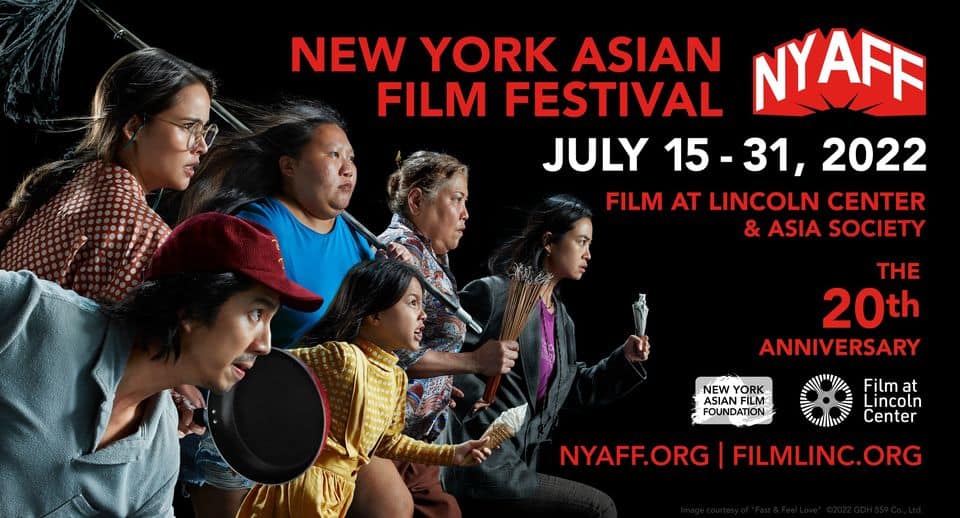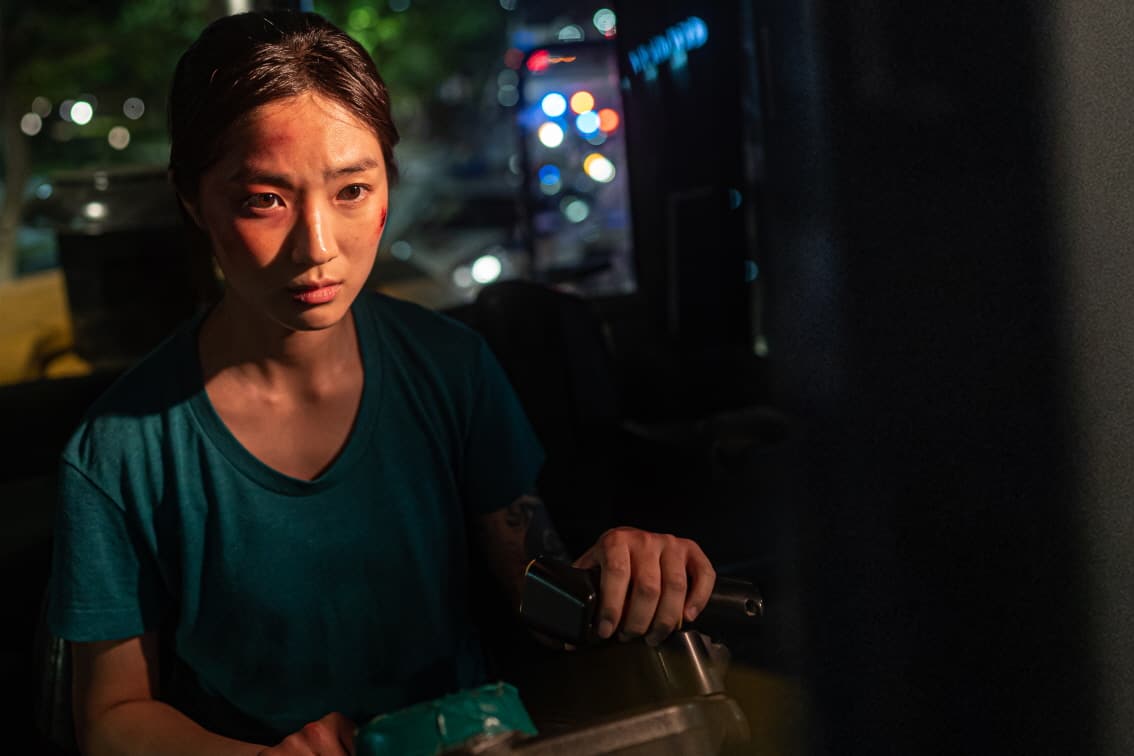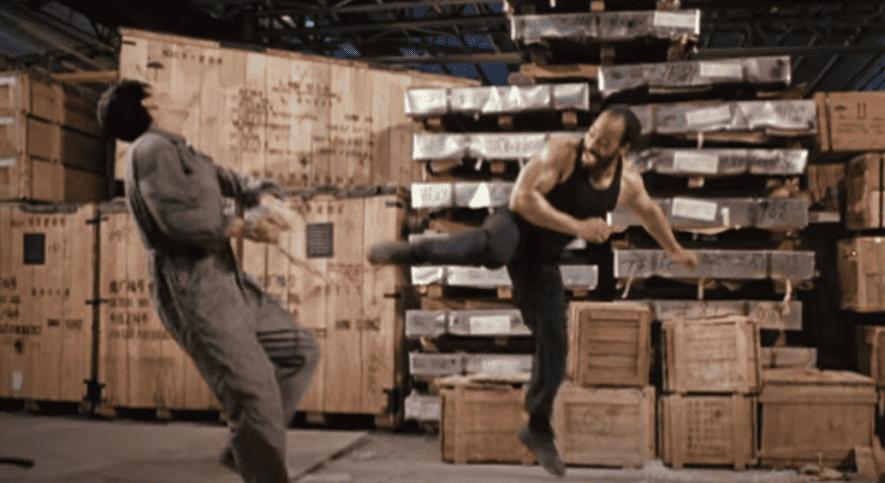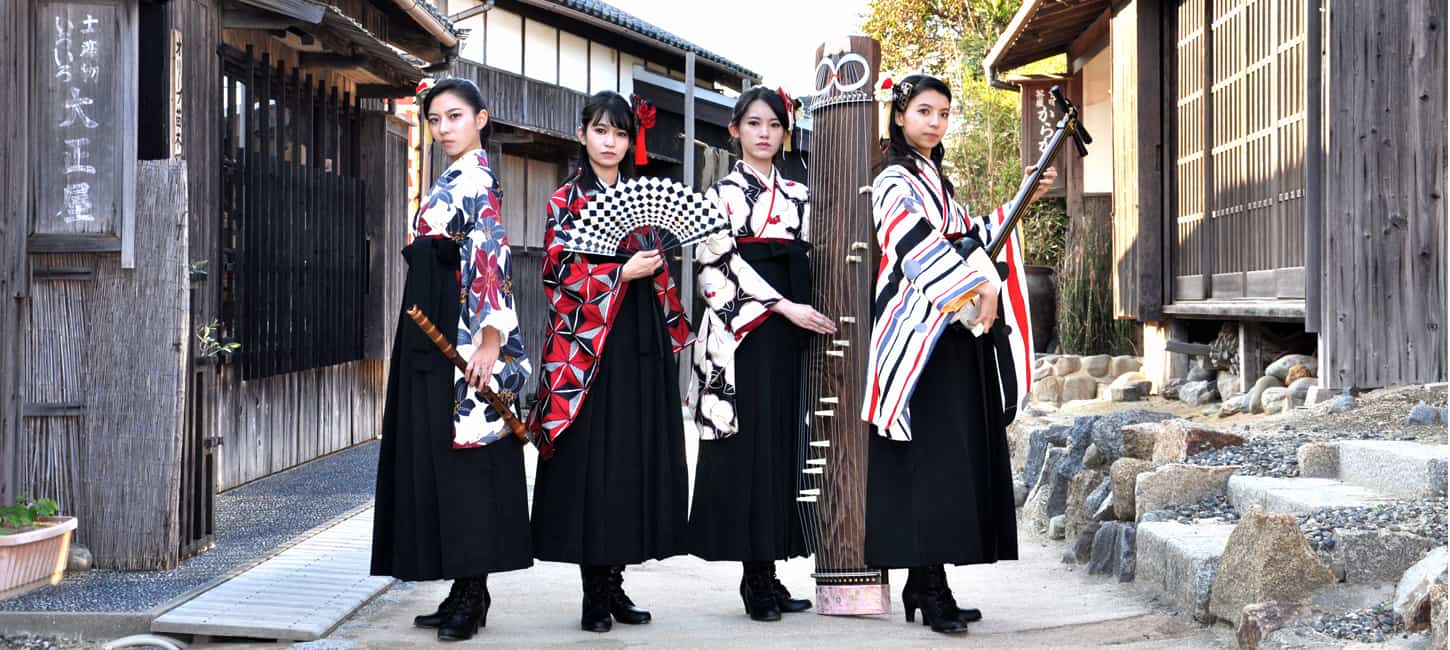Park Ri-woong received an MFA from the Korea National University of Arts. He directed the short films Windowsill (2003), Family (2005), Let Us Go (2007), and Good Yeounha (2008), which were honored with awards at such festivals as the Seoul International Film Festival, Filmfest Munchen, and the Jeonju International Film Festival. His feature debut, The Girl on a Bulldozer, premiered at the 2021 Busan International Film Festival and was invited to the Osaka Asian Film Festival and Far East Film Festival in 2022.
On the occasion of “The Girl on a Bulldozer” screening at New York Asian Film Festival, we speak with him about the inspiration behind the film and the presence of the bulldozer in particular, the true nature of the film, the difficulties the production met, Kim Hye-yoon and other topics.
additional questions by Rhythm Zaveri

The leap from Data Manager in films to Director is quite a unique one. How did that come about?
At the time I was an aspiring director who had graduated from the MFA program at the Korea National University of Arts, majoring in film directing. I thought the fastest way to become a director was to write a good screenplay and parlay that into directly directing it, but I needed some type of income to make an initial living. It was a time when the film industry was rapidly transitioning from film to digital, and I was skilled in handling digital devices, so I started the job of a data manager because it gave me more time than being on the directing team and relatively paid better. It almost felt like I was being paid to be on set as a field trip. I finished the conceptualization and treatment for “The Girl on a Bulldozer” on set of a film shooting in Busan, which was subsequently made into a film, so to be precise I wouldn't call it a career leap/shift.
Did you write “The Girl on a Bulldozer” with the intention of directing it and what was the inspiration behind the story?
Yes. I like meaty stories that get straight to the heart of things without getting mired in unnecessary story points, so I came up with the story with that kind of direction in mind. I wanted to make a film about someone whose character is revealed by risking everything in a difficult situation, and the story is a combination of various ideas I had. I saw an image in a game arcade where a young mother was riding a motorcycle with a newborn baby on her back, which gave me the inspiration for the story about a woman who wanted to escape from somewhere. I read a story about a former president who forcefully took away key money from a Chinese restaurant (which was not a lot of money to begin with), and conceived the image of a villain. Also, during my experience volunteering with the presidential election in 2012, I realized that greedy people who constellate around people with power can do much harm to society, and that influenced the story a lot as well.
Why a bulldozer specifically?
When I was in college, there was a national farmers strike, and farmers rode their farming machines on the highways all the way up to Seoul. The image of powerless people atop of massive machines was a powerful image that was seared into my brain. I do admit that I drew inspiration from “Alien 2”, where a woman gets on a massive machine. Because home as a base for life is an important pillar of the story, I needed a machine that was powerful enough to steamroll over that, and so naturally it became a bulldozer.
Actually the machine you see in the film is called a payloader, but a lot of people just call it a bulldozer. In the context of one of the film's important themes which is ‘the one searching for the truth', the film title not being entirely accurate gave it a flavor of irony, which I liked.
The former president, who served as the villain motif, his nickname was bulldozer as well. There's a bulldozer-like quality in Hye Young's personality as well, which I think is a good metaphor.
In the promotional material for the feature, the film was marketed as a revenge story, but I think it works primarily as a character study before anything else. Would you say this is a fair assessment?
That's a good point. From the start, I didn't think that what Hye Young was doing was an act of revenge. I actually think it's closer to an act of self actualization. If the genre of the film was a revenge story, then it would be a disheartening film where you watch a failed revenge. But if we think of it as a character story where an immature child that will not bend her will finally makes her existence known to the world, then I think the story earns more than enough meaning. I thought she was a character that's never existed in the realm of Korean cinema yet.
The biggest challenge was being able to have the audience identify and empathize with such an ‘unlikeable' lead character. The character itself, and the way I envisioned and executed that was my biggest priority, so all the directing, shooting, editing and scoring was concentrated toward realizing that goal, since this is about a ‘girl' on a bulldozer.
For those who came to the theater by way of the revenge marketing might feel that the revenge part in the climax was unsatisfying and that the story ended prematurely with no clear resolution. I regret not being able to persuade the marketing team that the theme of the film is that ‘Truth matters', and therefore made misguided audiences come to the theater.
The film shows that Hae-yong's father is essentially useless and the way society (the grown-ups ) treats her for being young, poor and a woman is truly infuriating. Is this a sort of accusation towards the previous generation and Korean society in general?
I don't feel like I've held up my responsibility enough as a citizen in society enough to be able to make an accusation toward Korean society. But I do feel in my skin that the level of rampant materialism and selfishness in Korean society is bubbling at a dangerous level today. I sometimes wonder if the primary values to people are ‘me' and ‘money' these days. Neighbors, friends, and family are no longer safe havens. Maybe that's why Korea has the highest suicide rate in the world. The fact that the people in the film easily attribute Bonjin's death to suicide reflects this societal awareness.
Bonjin is a symbol of normal people who have led complicated and loose lives in the past, but are now trying their best in their own realities. He is a hardworking person who made a shabby Chinese restaurant into a popular one in a few years. Of course, because of his past mistakes, people's judgments of him doesn't improve as quickly. But Bonjin is definitely not an ‘essentially useless' person.
Conversely, the film observes how society treats Bonjin. It follows how Hye Young's aunt and uncle, and chairman Choi lie and do harm for their own benefit. The initial abuse that Bonjin receives just transfers straight over to Hye Young once he's gone. When Hye Young's father, who she's thought of as a useless human being, disappears, she realizes how heavy the burden of the world on his shoulders was, and is put in a situation when she herself must endure it. The abuse that she's subject to has already been experienced by Bonjin. What Bonjin went through are things that any person in Korean society can experience. It conjures more rage because the violence is directed toward an underage girl, yes, but I think that the feelings of anger and compassion ultimately connect with the Bonjin we meet again in the end, and in that sense, with ourselves.
Please tell us about the casting of Kim Hye-yoon and your overall cooperation with her

I first looked up her work because a casting director strongly recommended her, and realized she was the actor that made the biggest impression on me in the TV drama series “Guardian: The Lonely and Great God”. I knew that she'd be able to carry a two hour long film from her work in the series “Sky Castle” and “Extraordinary You”. But because both characters she played in those projects had a stronger, animated character-like quality, I wanted something a bit more realistic. But after watching her work in past short films and smaller roles, I was confident she was the one. I think she has a very cinematic face, in a good way.
Before filming, we did many readings over quite a long period of time. We discussed specific circumstances of each scene and built a better understanding of the characters, but for lack of a better word, this film itself has a more physical character. I think that's why Kim Hye-yoon understood my direction precisely when we were on set, and in terms of balancing the range of emotion, I only made maybe one or two adjustments in the beginning, and then in most of the scenes Kim actively became Koo Hye-young. I think she understood the character perfectly.
The scene that begins with her driving the bulldozer through the streets eventually destroying an apartment seems very demanding, also in terms of production. Can you give us some details about the way you shot it?
Kim Hye-yoon did learn how to drive the bulldozer but wasn't able to obtain a license. She wanted to, but the license test only happened once or twice a year so it wasn't possible. Therefore, because driving without a license on the road was illegal we had to use a stunt person who had one. Even then, it was difficult to secure a road where we could drive the bulldozer, and it was difficult to obtain permits for that as well.
If we had had the budget it would have been a simpler process of just building all the sets, but because we didn't, it was very hard to find a villa where we could park a bulldozer in front of at night. If the Chinese restaurant was too big we would go over budget, so finding just the right size Chinese restaurant was also very hard. I remember the anxiety riddled days when we couldn't find the right restaurant close to our shoot dates.
We were on location in a Chinese restaurant for scenes that took place inside, the second floor, kitchen and front yard and built a set of the restaurant for the demolishing scene. We took off the sign and decorations from the original restaurant and attached them in exactly the same way on the set restaurant. If we built a set of the entire restaurant we would be going three times over budget, so we only built a third of it, the front part of the restaurant that would be visible from the camera angle. For a low budget film, we were lucky enough to bring on professionals in terms of shooting, lighting, and CGI, so we followed their judgements faithfully. Despite that, there were some physical limitations such as the restaurant set demolished too quickly only after several hits, which was too bad. If we were using a real bulldozer I think the shooting might have been simpler, but the machine we used for filming was a payloader and where there's not much pushing strength —- a payloader is used to dig and scoop —- so the concern was that the set wouldn't collapse. So naturally, prior to the demolition, we sawed parts of the set and cut some parts first to avoid that outcome, but that was our miscalculation. But it's a relief it was executed in the film in a satisfactory way. We spent almost 10% of our budget just on the scene of the restaurant demolition.

We built sets for the interior of the villa. Because of our small budget, our producer Ahn Byungrae himself helped the set design team by sticking tiles and pasting wallpaper to complete it. The exterior villa scenes were shot on location, and it was crucial we got the residents' cooperation because they were night scenes. Because bulldozers make a lot of noise, we felt so apologetic about even just keeping the engine running, and were nervous because we had to shoot scenes with the actors and police shouting. Luckily, it was a smooth shoot thanks to the help of the understanding residents.
We filmed for three days for the exterior villa shots, but despite the many scenes we had to film, half the time it rained so we were moving at a slow pace. We had to continue filming in the rain for a few scenes, which is why you see rain coming down on the bulldozer right after it stops after the climax. I actually like that scene because the rain added a quality of depth to it.
The process of just working with construction machines was time consuming. Because of its size and particular dimensions, it took a lot of time to mount and dismount the equipment, and it was also dangerous because the actors driving couldn't see in front of them because of the equipment. It also took a long time to clear and control the premises we were filming in. I want to thank the entire crew that were crucial to safely completing such a difficult and demanding shoot.
The film includes a couple of intensely violent scenes. Were these difficult for the actors and what was your approach towards both shooting them and guiding the actors?
The first scene when she is fighting with the three delinquent students was made with the help of fight choreographers, and I added some more things on set. It must have been very exhausting for the actors, but it looked like they were having fun because it was their first time filming an action scene. At least, that's what it looked like to me. Kim Hye-yoon said to me “I think I have a knack for action”, and enjoyed it. Of course once we kept filming she got bruised here and there and had to stick pain relief patches on herself almost daily because of severe muscle pains. It must have been very physically demanding, but thankfully she did well.
I wanted to avoid the kind of action we see a lot in movies where every movement is so structured and fits like a glove because those felt too planned out. I wanted to see the kind of freestyle fighting you'd witness on the street in front of a convenience store somewhere, but the filming was difficult because of this very concept. Trying to put on protective gear wearing short sleeves and short skits also proved difficult. I eventually tried to shoot movements like pressing down, straining and shaking to convey the rebellious energy rather than hitting/being hit. The scenes where she's fighting chairman Choi or the scenes where Bonjin is victimized were shot with a similar concept in mind.

With the last assault scene with the male bully, I was more worried about Hye-juk than Hye-young, because if he didn't have an understanding of violence on film it could be a traumatic experience. Luckily, the actor Park Si -woo knew precisely that this was an acting situation, and we were able to complete it with the help of his parents and the actor Yang Mi-sun who coached him.
I didn't want to directly draw attention to Hye-young being hit by a man, because I thought it was an unnecessarily sadistic choice. But even with the use of sound and cutaways, I wasn't able to truly mask that quality. It's something I'll have to give more thought to when directing a violent scene next time.
What is your opinion of the Korean movie industry at the moment?
Compared to the bigger films, it feels like the quality of smaller films has gone up as well as the diversity of films. Conversely, it feels like audiences are drawn toward bigger films that guarantee an entertaining time. It feels like this trend will continue amidst the film market slowing down due to covid, and my hope is that the Korean Film Council or other film organizations continue to support these small films so they can firmly establish themselves in the film eco-system.
Are you working on any new projects?
I'm working on a project that's due to start filming at the end of this year. The English title is “The Rower”, and the Korean title is “The Seagull on the Morning Sea”. It's about an old sea captain and a young sailor whose strange lies rock a small fishing village to its core. It's a story filled with desire and regret, but I'm hoping people also discover hope through the film as I do my best to prepare.
Thank you for your questions and requesting an interview!
















